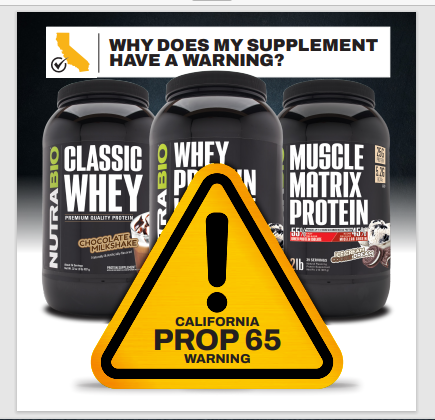Is native whey better than regular whey? EndurElite Chief Endurance officer Matt Mosman discusses why native whey protein is nothing more than a gimmick.
5 Fast Facts About Native Whey Protein
- Native whey is not really native since it has been denatured through a filtration process.
- Native whey claims to have higher amounts of good fats and lactoferrin but this is not possible due to the filtration process.
- Native whey does have more BCAAs and lysine than regular whey but this DOES NOT promote a greater recovery response.
- Native whey isn't bad per say but it is not better in terms of muscle repair and recovery compared to a high-quality whey isolate or concentrate.
- Most native whey products probably contain little native whey at all, and it really isn't native.
Full Video Transcription:
Good morning, family of fast. Matt Mosman, the Chief Endurance Officer over at EndurElite. Welcome to a bonus episode of "Busting the Bull." So, after yesterday's video on grass-fed whey protein, I got a question from one of the members of the family of fast saying, "Hey, Matt what's the deal with this native whey protein?"
Why Native Whey Protein Really Isn't Native
And, let me tell you, I know a thing about native whey protein and all the trickery involved with it. But here's the point, unless your whey protein comes from raw milk, aka the teat of a cow and is not pasteurized or homogenized or denatured, it's not native whey protein. Sorry, that's the God honest truth.
Native Whey Is Denatured
And here is why. Whether you have a whey isolate or a whey concentrate or a native whey, that milk to form the whey goes through the process of separation, whether it's through filters or ion exchange or acidity or heat, so in the end, the protein is denatured, even the native whey. So again, it's not native whey, it's a marketing gimmick.
The Claims Made About Native Whey
So, beyond that, native whey will claim that it's the least processed form of whey, it has higher amounts of BCAAs and lysine, and this part is true, they do, but more doesn't always equal better. And in fact, there's a study done out there comparing the native whey to milk concentrates to a micellar casein, each group took 20 grams and they measured the anabolic response to basically consuming these different forms of whey protein.
And what they found out is even with the higher amount of BCAAs found in the native whey, it didn't stimulate muscle protein synthesis to a greater extent than just the milk concentrates or the micellar casein at all.
Native Whey Isn't Bad But It Is Not Better Than Whey Isolate
So, is native whey bad? No, it's not bad. It's going to do the same thing for you as a whey isolate or a high-quality whey concentrate, but to say that it's better or it's native, it's not. I'm sorry, myth busted, bull busted. This is the stuff that gets me fired up, these marketing gimmicks like a superior form of native whey, it's gonna be put on mounds of muscles and recover quicker because it's native. Baloney.
Look Out For These Gimmick With Native Whey
So, I looked at some of these native whey companies, well that make that native whey protein and I saw something else pretty interesting. A lot of you I know take a popular native whey, it's big in the obstacle course racing community. So, I looked at their label and it is gimmicky as [inaudible 00:03:04].
And here's why, they claim native whey, our products are native whey, but at closer examination on the label, you know what I saw? The first ingredient was whey isolate protein blend with the ingredients being whey isolate and then native whey, and then after that, whey concentrate for a total yield of 25 grams of protein.
But here's the trickery, anytime you see a blend it's probably a proprietary blend, and basically the ingredients you see come first on a supplement facts panel, those are the greatest quantity. So, on that whey isolate protein blend with the whey isolate and then the native whey, and then the whey concentrate after that, I can almost guarantee you, you are getting a minimal amount of native whey.
Like legitimately you're probably getting about 11.5 grams of whey isolate, probably 0.5 of native whey and then you nicely round it up with the whey concentrate with 12.5 grams to get you the 25 total grams. Don't believe me? Ask them. If you buy a native whey, say, "Hey, how much native whey is actually in this product?" Do it, I think you'll be surprised.
The Bottom Line On Native Whey Protein
So, take-home points and I'm going to reiterate what I said in the beginning, unless your whey protein is coming from raw milk, aka the teat of the cow, and it has not been denatured, you're not getting a native whey protein. I would rather see you save your money, skip the marketing gimmicks, and get a high-quality whey isolate or whey concentrate, with just 25 grams of protein.
All right, rant over. If you have a buddy who loves that gosh darn native whey, please share this video with them. If you want other videos like this on endurance training, nutrition, supplementation, busting the bullshit, subscribe to the EndurElite YouTube channel or head on over to the EndurElite blog at www.endurelite.com. Get social with us on Facebook and Instagram. And until next time my endurance friends, stay fueled, stay focused, stay fast, and most importantly stay informed.


